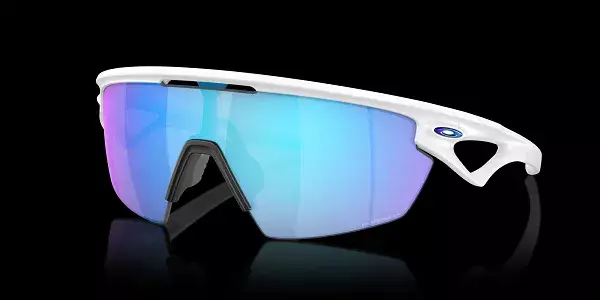Meta, the tech giant formerly known as Facebook, is strategically repositioning itself in the wearable technology landscape, particularly in the realm of augmented reality (AR). As the company gears up for the release of its new smart glasses later this year, there is much to unpack regarding its ambitious plans. In a fast-evolving market heavily influenced by competition, manufacturing costs, and consumer behavior, Meta’s approach marks a significant waypoint in the larger narrative of AR integration into daily life, particularly for athletes.
Innovations Tailored for Athletes
According to recent reports from Bloomberg, Meta’s upcoming smart glasses will be designed specifically with sports enthusiasts in mind. This targeted approach could signify the company’s intent to carve a niche in the competitive wearables market. Expected to be modeled after the popular Oakley “Sphaera” sunglasses, these athletic glasses will include advanced data tracking features aimed at optimizing athletic performance. The integration of a single, strategically-placed camera in the center of the frames exemplifies Meta’s commitment to merging function with form, aiming to keep the glasses lightweight without compromising on technological capabilities.
By aligning with a reputable brand such as Oakley, which is part of the EssilorLuxottica portfolio that also includes Ray-Ban, Meta not only harnesses quality design but also leverages existing brand equity. This collaboration, reinforced by Meta’s investment in EssilorLuxottica last year, paves the way for enhanced access to popular styles and frames, facilitating a smoother entry into the sports tech market.
As part of its broader strategy, Meta is also expected to introduce its latest iteration of smart glasses, now branded as “Ray-Ban Meta.” These glasses will boast a heads-up display, enabling users to view notifications, display photos, and even run simplified applications. The move towards integrating a heads-up display underscores a commitment to user experience by providing immediate access to digital information without disrupting real-world engagement. However, it is essential to note that while these glasses will deliver augmented information, they will not be fully AR-enabled, which suggests a gradual evolution towards an immersive experience rather than an immediate leap into complex AR applications.
This cautious approach highlights Meta’s awareness of the market’s current limitations, both in user readiness and production capacity. By prioritizing smaller-scale functionalities, Meta can gather critical user feedback and refine its offerings over time, effectively setting the stage for future advancements in full-fledged AR technology.
Price point continues to be a significant consideration for Meta. CEO Mark Zuckerberg’s critical evaluation of Apple’s AR-enabled VisionPro device, which retails for an exorbitant $3,499, indicates a keen recognition of existing barriers to widespread adoption. Meta aims to maintain a more accessible price point, although the anticipated price for the forthcoming model is predicted to be approximately double that of its predecessors. This tension between advanced tech and consumer affordability illustrates the challenge Meta faces in balancing high production costs with competitive pricing.
Furthermore, Zuckerberg’s vision for smart glasses eventually surpassing smartphones in popularity raises questions. Achieving this paradigm shift requires not only technological advancements but also significant changes in consumer habits and societal acceptance of AR technology. Meta must therefore consider how to foster an environment that promotes these shifts while simultaneously managing production costs—an essential factor especially in light of potential tariffs on foreign imports under the Trump administration.
Meta’s future ambitions could hinge significantly on political dynamics, particularly the incoming Trump administration’s economic policies. The tech company relies heavily on components sourced from international suppliers, particularly China. Changes in trade policies affecting these imports could pose substantial risks to Meta’s plans, underscoring the precarious balance between technology advancement and governmental collaboration. Zuckerberg’s overtures towards aligning with political figures may be perceived as controversial; however, they could be strategically driven to secure a favorable operational environment that facilitates innovation.
The consideration of such implications is crucial in understanding Meta’s expansive goals in AR, AI, and VR technologies. While Zuckerberg’s compromises—even if politically unpopular—may yield immediate benefits, they also carry the risk of long-term reputational costs.
Meta stands at a crossroads with its latest smart glasses initiative, poised to make significant inroads into both the athleisure and tech markets. The success of these products will not only depend on technical innovation and consumer acceptance but also on how well the company navigates the complex interplay of economic challenges and regulatory landscapes. The coming year promises to be a pivotal time for wearables as Meta continues to push the boundaries of augmented experiences in a competitive tech environment.

